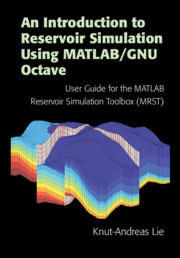Refine search
Actions for selected content:
8 results
Chapter 4 - Primer
- from Part I - Background
-
- Book:
- Working with Network Data
- Published online:
- 06 June 2024
- Print publication:
- 13 June 2024, pp 39-62
-
- Chapter
- Export citation
Chapter 8 - Implementation: storing and manipulating network data
- from Part II - Applications, tools, and tasks
-
- Book:
- Working with Network Data
- Published online:
- 06 June 2024
- Print publication:
- 13 June 2024, pp 89-104
-
- Chapter
- Export citation
Appendix A - The R System: a Brief Overview
-
- Book:
- A Practical Guide to Data Analysis Using R
- Published online:
- 11 May 2024
- Print publication:
- 30 May 2024, pp 469-494
-
- Chapter
- Export citation
5 - Incompressible Solvers for Single-Phase Flow
- from Part II - Single-Phase Flow
-
- Book:
- An Introduction to Reservoir Simulation Using MATLAB/GNU Octave
- Published online:
- 22 July 2019
- Print publication:
- 08 August 2019, pp 143-173
-
- Chapter
-
- You have access
- Open access
- Export citation
14 - Grid Coarsening
- from Part IV - Reservoir Engineering Workflows
-
- Book:
- An Introduction to Reservoir Simulation Using MATLAB/GNU Octave
- Published online:
- 22 July 2019
- Print publication:
- 08 August 2019, pp 518-557
-
- Chapter
-
- You have access
- Open access
- Export citation
3 - Grids in Subsurface Modeling
- from Part I - Geological Models and Grids
-
- Book:
- An Introduction to Reservoir Simulation Using MATLAB/GNU Octave
- Published online:
- 22 July 2019
- Print publication:
- 08 August 2019, pp 55-110
-
- Chapter
-
- You have access
- Open access
- Export citation

An Introduction to Reservoir Simulation Using MATLAB/GNU Octave
- User Guide for the MATLAB Reservoir Simulation Toolbox (MRST)
-
- Published online:
- 22 July 2019
- Print publication:
- 08 August 2019
-
- Book
-
- You have access
- Open access
- Export citation
The initial meadows
-
- Journal:
- The Journal of Symbolic Logic / Volume 75 / Issue 3 / September 2010
- Published online by Cambridge University Press:
- 12 March 2014, pp. 888-895
- Print publication:
- September 2010
-
- Article
- Export citation
